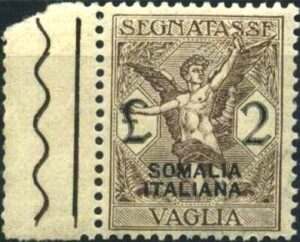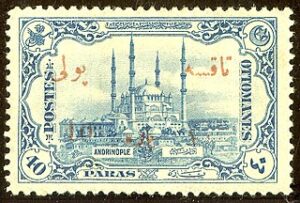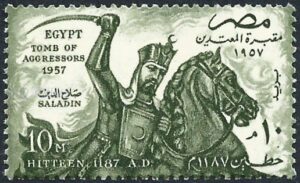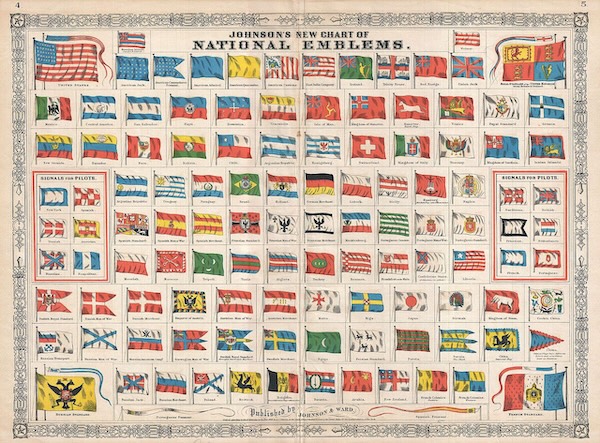Donald Trump is now the second US President to be elected twice to non-consecutive terms, the first one being Democrat Grover Cleveland in 1893. The big question for readers of Cultural Property News is what his political comeback will mean for collectors. Will the new Administration help “Make Collecting Great Again” or will it be anti-collecting business as usual at the State Department and other government agencies? Predictions are always perilous to make, but here we go anyway!
Import Restrictions on Cultural Goods

Canada flag made in CGI. Author Aerra Carnicom. CCA-SA 4.0 International license.
While Trump has promised to cut government regulations, do not look for much relief when it comes to import restrictions on cultural goods. Once cultural property memorandums of understanding or MOUs get approved and related import restrictions get imposed, it is rare for them to disappear. To date, of the 34 agreements or emergency actions currently listed on the State Department’s Cultural Heritage website, only two, those with Canada and Nicaragua, have been allowed to expire.
As for the others, many have been renewed every five years for decades, despite a distinct lack of evidence that such agreements have any positive impact on the ground. Why? Because what was conceived as a focused effort to protect important archaeological sites and culturally significant objects from looting has instead morphed into a State Department policy to enforce the claims of foreign governments to almost anything “old” as a “soft power measure” in the hopes that will make them “like us more.”

Soviet Union, 5 May 1988, Perestroika “Reform” Workers and Industries stamp, USSR Post.
All this would have a limited impact for collectors except for the chilling effect import restrictions have on the legitimate trade with third countries, particularly in Europe. The State Department and its partners in the archaeological lobby claim that import restrictions actually benefit legitimate collecting because they help keep looted material off the market. What they fail to admit, however, is that such regulations are applied far more broadly as an embargo on all cultural goods of a “designated type” entering the US, including those sold legally abroad.
The major issue is that US Customs does not enforce import restrictions solely on illegal exports from a given country made after the effective date of regulations but far more broadly against any import of a “designated” item into the US after the effective date of regulations, i.e., an embargo, not targeted, prospective import restrictions. Moreover, although the law in question has a safe harbor provision, the documentation necessary to take advantage of it often does not exist, particularly for low value items. As a result, MOUs and associated import restrictions allow foreign governments to “claw back” artifacts imported into the US, including from legitimate markets abroad, simply because they lack sufficient documentation to take advantage of safe harbor provisions for legal import.

Stamp of Alaouites – 1925 – Colnect 215400 – Palmyra, Tadmur, Syria, Colonnade and triumphal arch 3rd c.CE, public domain.
It does not seem to matter that the program now benefits some of the most dysfunctional, dictatorial regimes on the planet or that the restrictions are often being applied against American citizens when there is a far larger market in the exact same sorts of cultural goods in countries for which restrictions are granted. If the primary goal is to negotiate as many agreements as possible as a “soft power” measure, what should be honest questions about their fairness and their efficacy are simply ignored.
Unfortunately, bureaucratic inertial will likely keep the MOU train chugging along despite any inconsistencies with Trump’s “America First” rhetoric. Even after Trump takes office, there are several Biden era MOUs or related import restrictions in the pipeline that will likely be approved without much, if any, Trump Administration scrutiny for their impact on American collectors, the trade and museums. The Biden State Department has already agreed to MOUs with India, North Macedonia, and Uzbekistan, but related import restrictions have yet to be issued. The State Department Cultural Property Advisory Committee (CPAC), which advises the Administration in such matters, has already met and presumably also made recommendations for additional MOUs with Lebanon and Mongolia. Moreover, the State Department recently gave advance notice of a February 4, 2024, CPAC meeting to consider a new MOU with Vietnam and renewals with Chile, Italy and Morocco.

Soviet-Vietnamese Space Flight. Crew of Soyuz 37 at launching site, 1980, public domain.
New and Renewing Requests for Restrictions under the Cultural Property Implementation Act
Both the newly proposed Vietnamese MOU and the Italian renewal should be a real test for the Trump II Administration. One would hope that the new Administration would be wary of a new agreement with Communist Vietnam, particularly because it could impact the rights of Vietnamese refugees and their families to their own cultural heritage. As for the MOU with Italy, it has been in force since 2001 and it covers cultural goods (notably coins) which are legally bought and sold within the country. Enough should be enough; Italy’s own aggressive enforcement efforts (along with rural economic development) have greatly diminished any looting, the purported reason for the import restrictions.
Certainly, any renewal should not be an excuse to expand the current designated list to cover even more recent material, particularly late Roman Republican and Imperial coins. However, possibly by design, the CPAC hearing will take place so early in the Trump II Administration that it is likely no Trump II appointees will be given the opportunity for input. Instead, decisions on both MOUs likely will be made solely by the career bureaucrats based on recommendations from a Biden CPAC. When the Biden Administration took over from Trump I, the State Department put off a hearing on what should have been a controversial renewal with China until Biden appointees were in place, probably to help ensure the desired result.

Stamp of Italian Somaliland, 1926, Poste del Regno d’Italia, public domain.
Presumably, the incoming Trump Administration should be afforded the same courtesy for the new MOU with Vietnam and a renewal of an important MOU with Italy, but will the State Department bureaucracy even flag the issue for the incoming Administration?
Certainly, Trump II should replace current CPAC members as soon as possible. The current CPAC is little more than a rubber stamp for the State Department. From their comments during past hearings, all the members representing archaeological interests as well as some others are virulently opposed to private collecting. Indeed, in one low point, two members representing archaeological interests berated a young coin collector/auction house employee who testified at the MOU hearing on India. Other members may not be outwardly hostile, but they do not appear to be strong advocates for collectors either, perhaps because their knowledge about archeological and ethnological objects is limited.

Late Ottoman Turkish postage stamp, 1913, public domain.
It is unclear how long current members will hold their current seats, and if and when they are replaced, whether the replacements will end up being more open to the arguments of collectors and the trade. During Trump I, there was a collector on CPAC (Anthony Wisniewski) as well as two archaeological absolutists. Other members had varying degrees of knowledge about the subject matter, but at least most appeared open to persuasion. Hopefully, Trump II can find more open-minded members to serve, but that will take qualified individuals to be appointed to CPAC. Unfortunately, it’s more difficult to recruit talent as one might think, given the perception that CPAC has become little more than a rubber stamp. Additionally, there is the suspicion that the State Department “blackballs” qualified candidates that might “rock the boat” too much.
Tariffs

25th Anniversary Peoples Republic of China, Cheering crowd in Tianamen Square, Albanian Post, public domain.
The Trump I Administration placed tariffs on antiques with a country of origin of China, after initially giving an exemption. The rate was subsequently reduced to 7.5 percent by the Biden Administration. Incoming President Trump has promised to impose a host of new tariffs which will undoubtedly impact antiques, including common items like coins. Although there is supposed to be a statutory exemption for antiques, this exemption was ignored when Trump imposed tariffs after granting an initial exemption. In any event, if tariffs are proposed, there will be an opportunity for public comment of at least 60 days. Obviously, the major point for comment (in addition to citing the statutory exemption for antiques) would be that tariffs on antiques such as collectors’ coins produced centuries ago would have no positive impact on US manufacturing, one of the major reasons for such tariffs.
Anti-Money Laundering (AML) Regulations
The trade is still awaiting FinCEN, a Treasury Department entity, to announce proposed AML regulations for dealers in “antiquities.” Once proposed, there again should be an opportunity for public comment of at least 60 days. However, one can be hopeful that with a new Republican Administration, FinCEN may be less likely to take a too broad view of what constitutes an “antiquity.”
Influence of Archaeological Advocacy Groups

Stamp from Egypt, Issue 26 July 1957, Tomb of Aggressors: Saladin and battle of Hitten, public domain.
Given their left-wing “woke” approach which paints authoritarian dictatorships as “victims” of Western Imperialism, one might think that the influence of archaeological advocacy groups would decline under a Trump II Administration. Given Trump’s rhetoric, many thought the coin and antiquities trade would benefit from less regulation during Trump I, but that did not happen, probably because well-funded and politically connected archaeological advocacy groups worked hand in hand with the State Department Cultural Heritage Center staff to cynically push a false narrative that collectors were a major funding source for the ISIS terror group.
That claim has long since been debunked.
Repackaging their campaign against private collecting into an anti-terrorism effort helped unlock some generous State Department funding.

Yemen Mutawekkile Kingdom stamp, public domain.
While it’s likely their influence will continue, the financial bonanza these groups have received from the State Department may face substantial cuts from Trump’s “DOGE” budget cutting efforts. Assuming such cuts are made, diminished funding may impact the ability of at least some these advocacy groups to operate as effectively as they have done in the recent past.
Any budget cuts will not, however, impact funding for the Antiquities Coalition, one of the groups most responsible for pushing the false narrative that “stolen antiquities” were a major ISIS funding source. The Antiquities Coalition, which has a budget of about $500,000 per year, has successfully “partnered” with both the State Department and authoritarian Middle Eastern and North African (MENA) governments for additional MOUs.
Unlike their fellow advocates for blanket import restrictions, the Antiquities Coalition appears to be the “soft power” tool of a for-profit strategic consulting firm, Basilinna.
It is presumably no coincidence, that both the Antiquities Coalition and Basilinna share some key “team” members and both appear to focus much of their efforts on the MENA region.
Prospects for Legislative Reform

Stamp of Albania, 2007-10-23, with map of Europe. Post of Albania, public domain.
Legislative reform is essential to counteract the State Department’s anti-collecting bias which has made it increasingly difficult to engage in lawful trade and collecting. Here, coin collectors have received some positive news. Given the ever-increasing number or overlapping import restrictions, Congresswoman Beth Van Duyne (Republican- Texas) introduced H.R. 7865, legislation meant to facilitate the continued legitimate trade in collectors’ coins, particularly between the United States and Europe. The legislation’s coin specific “safe harbor” language allows for the import of coin types on “designated lists” with evidence the numismatic material was acquired lawfully, is of a known type, and is not the direct product of illicit excavations within a State Party after the effective date of any import restrictions on coins. While the legislation did not pass this term, it has received enough interest to justify further efforts in the upcoming Congress.
Far more legislative action is needed to make preparation of the designated lists accompanying MOUs more transparent and responsive to public comments, to ensure that the burden of proof remains entirely on the government so that only items proven to be illicitly exported after the effective date of any CPIA regulations are repatriated, and to protect the rights of religious and ethnic minorities to their own cultural heritage.
For this to have any chance of happening, collectors and the trade will need to step up and support the educational efforts of Cultural Property News as well as the advocacy efforts of such groups as the Global Heritage Alliance and the Ancient Coin Collectors Guild.
In the end, success will depend on far more active collector engagement!
See the Donation Pages of Cultural Property News and the Ancient Coin Collectors Guild.
PS. Postage stamps are among the many manufactured items now prohibited from export under the cultural heritage laws of countries with which the US has a cultural property agreement.

Édouard Manet, The Rue Mosnier with Flags (1878). J. Paul Getty Museum, Los Angeles
Next Installment: Days Gone By: When You Could Purchase Antiquities and Ancient Coins at Your Local Department Store
[1] Peter K. Tompa is a semi-retired lawyer who resides in Washington, D.C. He has written extensively about cultural heritage issues, particularly those of interest to the numismatic trade. Peter contributed to Who Owns the Past?” (K. Fitz Gibbon, ed. Rutgers 2005). He formerly served as Executive Director of the Global Heritage Alliance and now is a member of its Board of Directors. He currently serves as the Executive Director of the International Association of Professional Numismatists and as a board member of the Ancient Coin Collectors Guild. This article is a public resource for general information and opinion about cultural property issues and is not intended to be a source for legal advice. Any factual patterns discussed may or may not be inspired by real people and events. The opinions stated in this article are the author’s alone and should not be attributed to any affiliated organization.
 Johnson Chart of the Flags and National Emblems of the World - Geographicus - Flags, 1864, Public domain.
Johnson Chart of the Flags and National Emblems of the World - Geographicus - Flags, 1864, Public domain. 

